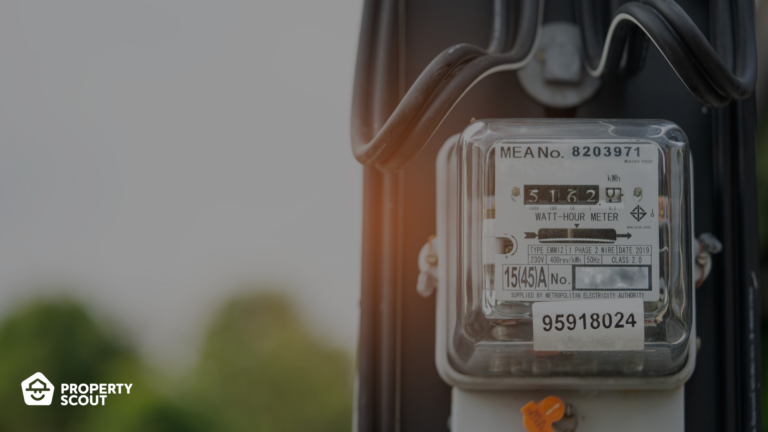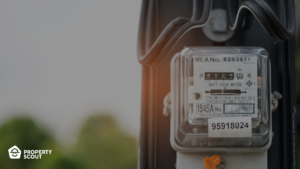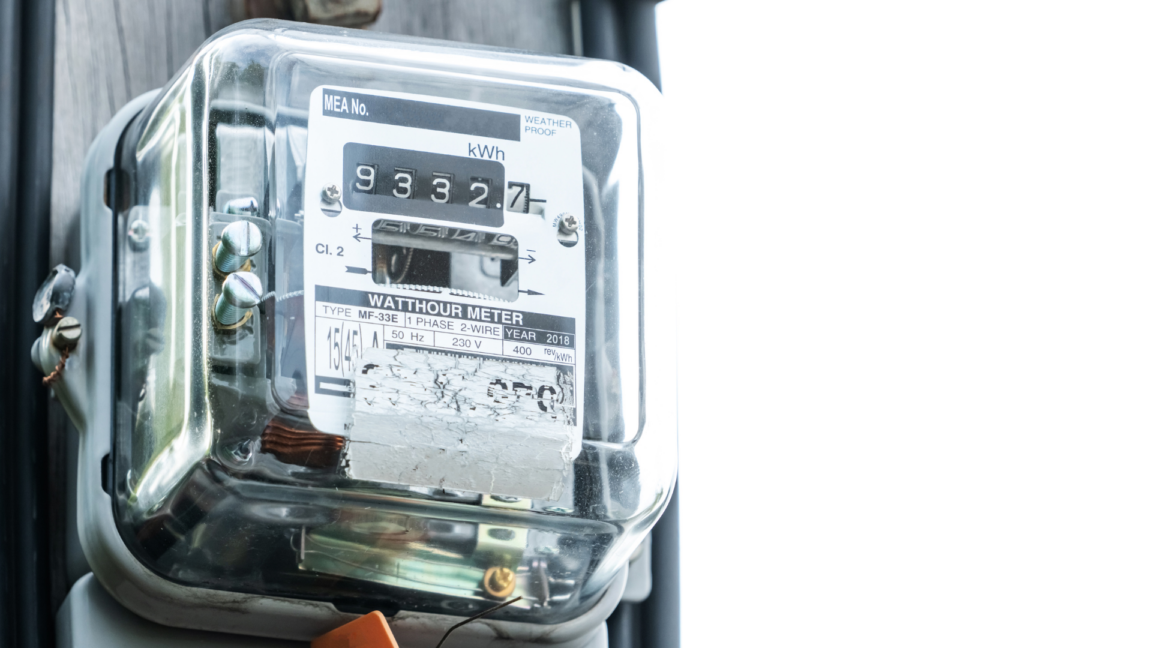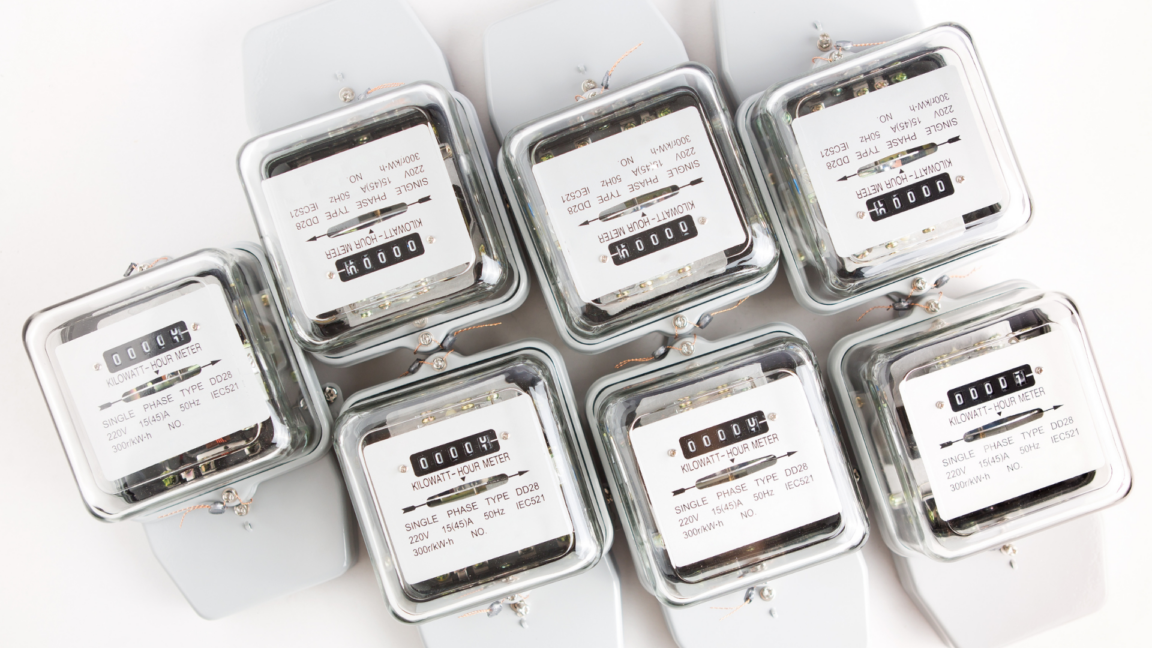The Power of Knowledge: Understanding Your Electricity Meter’s Data to Optimize Consumption


For every household, an electricity meter is an essential tool for measuring daily power consumption. In this edition, PropertyScout is excited to share valuable insights about electricity meters, including the various sizes available and how to choose the right one based on your home's electrical appliances for efficient energy usage. Plus, we'll guide you on accurately reading your electricity meter. Let's delve into the details!
What are Electricity Meters?

An electricity meter is an energy measuring device used to track the usage of electrical power over a period of time. Typically, it is installed outside homes or buildings and measures electricity consumption in kilowatts per hour. Now, let's find out how many types of electricity meters are available.
Types of Electricity Meters

The following are the different types of electricity meters:
- Electricity meter for residential properties
- Electricity meter for small-scale businesses
- Electricity meter for medium-sized businesses
- Electricity meter for large-scale businesses
- Electricity meter for specialized businesses
- Electricity meter for non-profit organizations
- Electricity meter for agricultural water pumping
- Electricity meter for temporary power users
Different sizes of Electricity meters for residential properties
Electricity meters come in various types and sizes, but in this article, we will focus on the electricity meter for residential properties.
To determine the size of the electricity meter, you can observe the numbers on the display. For instance, "5(15) A" means it is a 5-ampere meter that can handle a maximum load of up to 15 amperes. The sizes of electricity meters are as follows:
Electrical Meter Sizes and Electricity Usage
- 5(15) Single Phase Meter: Can handle electricity up to 15 amperes.
- 15(45) Single Phase Meter: Can handle electricity between 11 to 30 amperes.
- 30(100) Single Phase Meter: Can handle electricity between 31 to 75 amperes.
- 50(150) Single Phase Meter: Can handle electricity between 76 to 100 amperes.
- 15(45) Three Phase Meter: Can handle electricity up to 30 amperes.
- 30(100) Three Phase Meter: Can handle electricity between 31 to 75 amperes.
- 50(150) Three Phase Meter: Can handle electricity between 76 to 100 amperes.
- 200 Three Phase Meter: Can handle electricity between 101 to 200 amperes.
- 400 Three Phase Meter: Can handle electricity between 201 to 400 amperes.
Choosing the right Electricity Meter for your House

To determine the appropriate size of the electrical meter for general household use, factors such as the number of household members and the current number of electrical appliances, as well as potential future additions, need to be considered.
You can perform a preliminary calculation yourself to determine the suitable electrical meter size for your home. Simply take the electrical power of each appliance (in watts), which can be found on the labels of the electrical devices, divide it by the voltage (in volts), and multiply it by the quantity of each type of electrical appliance. Then, sum up the total electrical load and multiply it by 1.25 (to account for potential increased electricity usage in the future). For example,
Example
- Floor fan - 70 watts, 2x, electrical current (amps): (70 ÷ 220) x 2 = 0.64 Amps.
- Fluorescent light - 36 watts, 6x, electrical current (amps): (36 ÷ 220) x 6 = 0.98 Amps.
- Air conditioner - 1,200 watts, 1x, electrical current (amps): 1,200 ÷ 220 = 5.45 Amps.
- Rice cooker - 450 watts, 1x, electrical current (amps): 450 ÷ 220 = 2.04 Amps.
- Iron - 450 watts, 1x, electrical current (amps): 450 ÷ 220 = 2.04 Amps.
- Television - 40 watts, 1x, electrical current (amps): 40 ÷ 220 = 0.18 Amps.
- Refrigerator - 70 watts, 1x, electrical current (amps): 70 ÷ 220 = 0.32 Amps.
The total electrical current from all the electrical appliances combined is 11.65 amps. When multiplied by 1.25, it becomes approximately 14.56 amps. Considering it is still within the 15-amp limit, a 5(15) amp meter is suitable for the current usage. Normally, electrical appliances are not used simultaneously. However, to account for potential future additions of electrical devices, it is advisable to install a slightly larger meter for safety reasons. Therefore, a 5(45) amp meter would be appropriate.
How to read Electricity Meters
For reading the main meter display, there will typically be a frame with five digits indicating the consumed units. When reading the meter, it is important to determine the type of meter installed.
If the last digit has a decimal point or is marked differently from the others, it should not be considered. In this case, only the first four digits should be read. However, if the last digit does not have a decimal point or any distinguishing feature, all five digits should be read.
Would reading the meter incorrectly make a difference?
In the case of having a decimal point, let's assume the meter reading from the previous month was 1234.5, meaning the actual reading is only 4 digits, which is 1234 units.
However, in the following month, a different person reads the meter and, unknowingly, records the reading as 11985 with all 5 digits. When calculating the difference, 11985 - 1234 = 10751 units, which is a significantly higher value.
What does NO. mean?
"NO." stands for the "Number" or "Serial Number" on the electricity meter. It is the specific identifier used to recognize our meter, including the voltage and phase of the electricity used.
Who is Eligible to Apply for Electricity Usage?
For individuals who purchase land and build their own homes and wish to apply for electricity usage, the following qualifications are required:
- Landowner or owner of the premises using electricity.
- The applicant's name is registered at the address where electricity will be used.
- Tenant or lease-to-own occupant of the premises using electricity.
- Business operators at the premises using electricity.
Where and How to Apply for Electricity Connection?

The applicant can contact and submit the request for electricity usage at any electricity office.
After receiving the complete application with all required documents, the electricity officials will inspect the electrical wiring in the building. If the wiring is in place, the applicant will be notified to pay various fees. However, if the wiring is unsafe or incorrect, the applicant will be informed to rectify the issues and re-inspected. The fees for electricity connection are determined based on the type and size of the requested meter.
The applicant should pay the fees and keep the receipt as proof of payment.
For More Information
*In case of residential occupancy in a different province, please contact the regional electricity authority.
Closing Comments
In selecting an electricity meter, it's crucial for each household to consider the number of members and the total electrical appliances they use, both currently and for future needs. This thoughtful choice guarantees not only safe and efficient electricity usage but also optimal utility for the entire household. So, let's strive to read our electricity meters accurately to reap the maximum benefits for ourselves!
If you are looking for a decently-priced, authentic property, then you are at the right place! Click the links below and check out PropertyScout's expansive selection of properties available both for sale and rent today!



